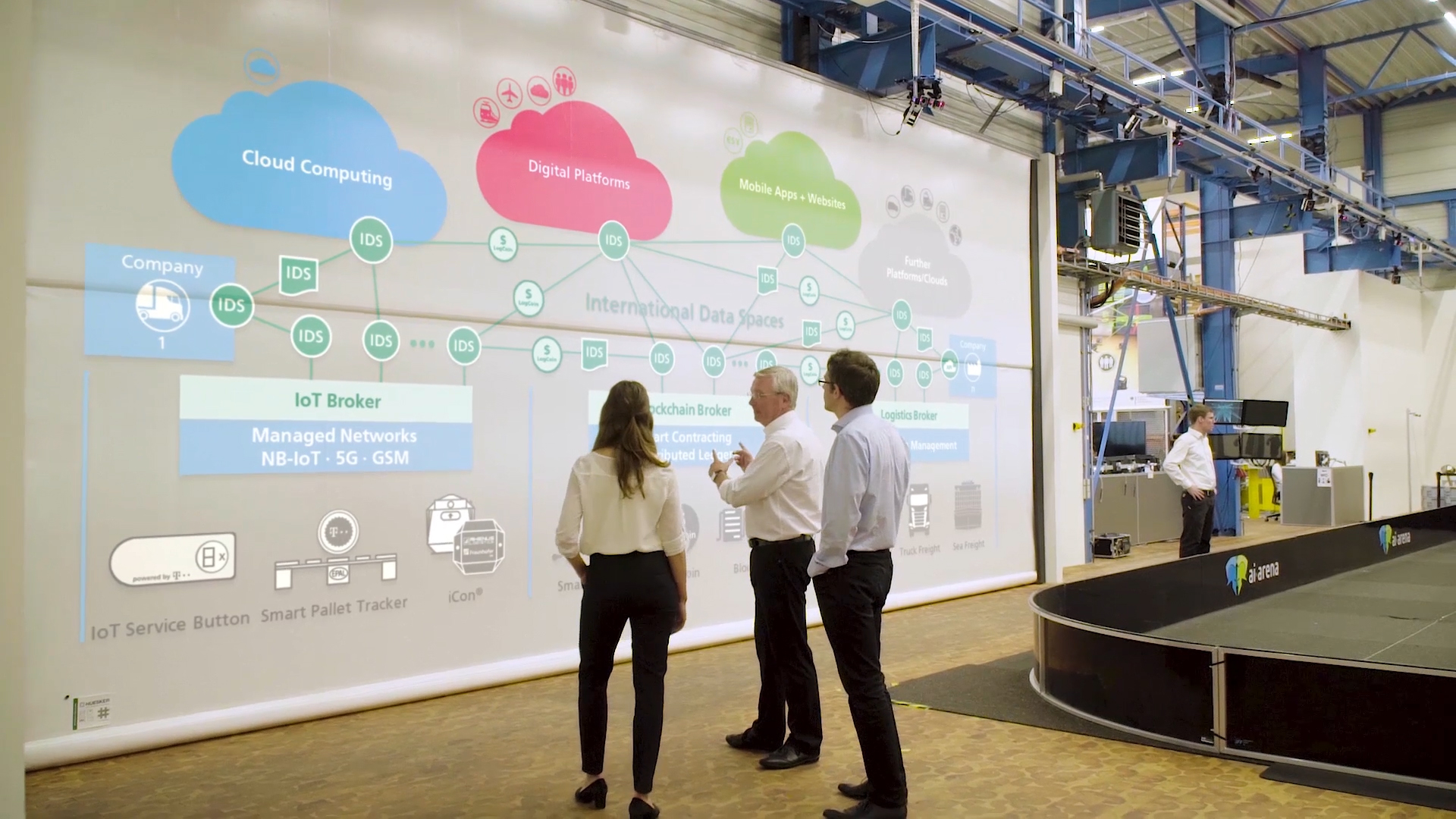Digitization and artificial intelligence will lead the world into a platform economy. This creates new business models that are based on data and use key technologies such as IoT or Blockchain to interlink goods, information and financial transactions worldwide. A look at the Silicon Economy
Logistics is undergoing a paradigm shift: access-controlled systems are being replaced by open, federal structures in which international data spaces ensure data sovereignty. This is the basic idea of the Silicon Economy, in which distributed artificial intelligences act as an essential driver. They negotiate, schedule, optimize stocks, simulate flows of goods or analyze goods by camera. Billions of autonomous devices will soon share information with each other, while smart contracts based on Blockchain technology will be negotiated and concluded using software according to defined rules – and will automatically trigger payment processes based on fulfilled if-then statements.
When everything becomes intelligent and everything communicates with everything, huge amounts of data are created – a real paradise for new, data-based business models. This creates digital platforms for the B2B area, which have long been part of our everyday life in the private customer area with Amazon, Uber or Alibaba. Companies can become brokers in the Silicon Economy: IoT brokers that connect intelligent containers or pallets with each other and offer the data obtained from them; Blockchain brokers through which smart contracts can be concluded and offer payment using cryptocurrency; or logistics brokers that offer logistics services and organize logistics processes.
The gigantic computing power and storage capacity that we now have, as well as the real-time connectivity via 5G enable us to help the Silicon Economy to have a breakthrough now. It is about converting existing technologies into end-to-end solutions. We will show you on the following pages that we have long since been holding the necessary technologies in our hands – with developments from Fraunhofer IML that piece by piece put together the puzzle of the Silicon Economy.
 Fraunhofer Institute for Material Flow and Logistics IML
Fraunhofer Institute for Material Flow and Logistics IML





